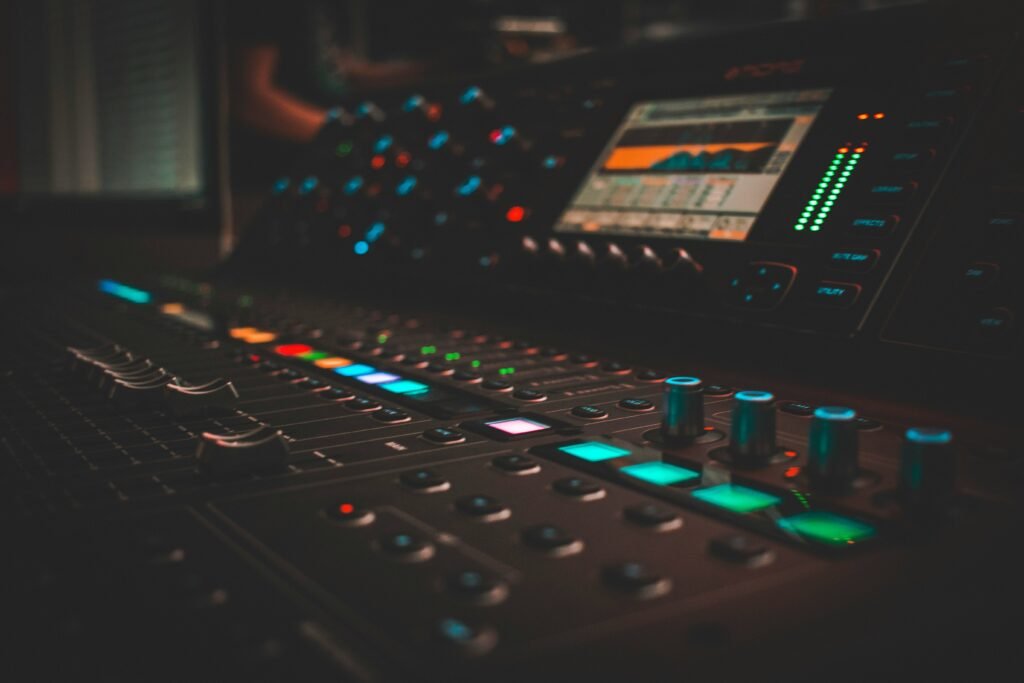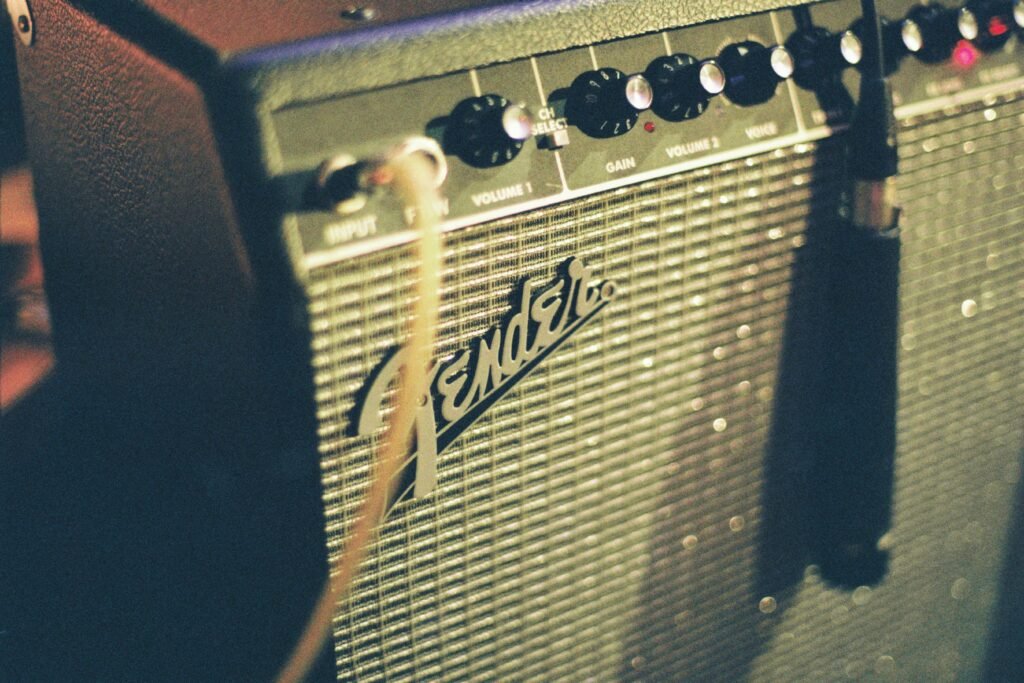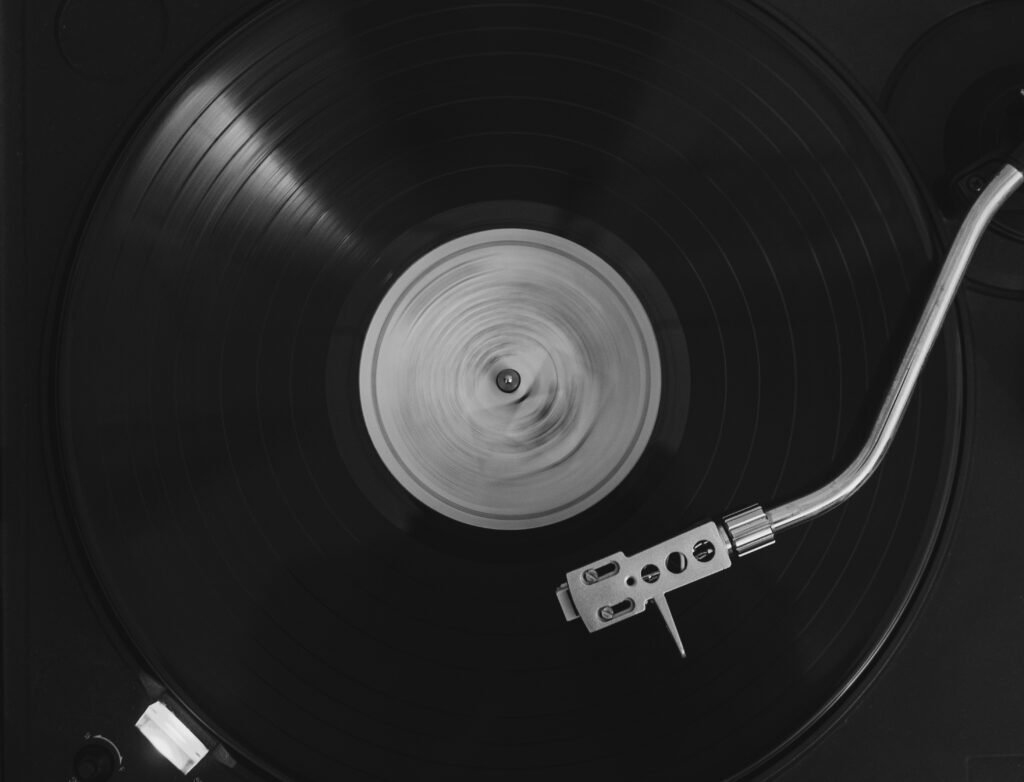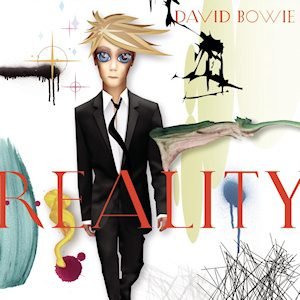Released in 2003, Reality arrived as the 23rd studio album in David Bowie’s expansive career, following closely on the heels of 2002’s Heathen. Where Heathen offered a reflective, sometimes somber meditation on mortality and memory, Reality feels more grounded and outward-facing. It embraces a directness that contrasts with the abstract textures of his late-90s output. In many ways, it serves as both a continuation and a simplification of themes Bowie had been exploring over the previous decade.
At the time, the music world was shifting rapidly. Rock was being reinterpreted through the indie revival, electronic influences were dominating pop, and legacy artists were being pushed to prove their relevance. Bowie, rather than chase trends, leaned into his identity as a craftsman. Reality isn’t so much a reinvention as it is a reaffirmation. He revisits familiar sonic territory—blending rock, pop, and traces of avant-garde—with the perspective of an artist who has nothing left to prove, yet still much to say.
Sonic Exploration

The production on Reality is sharp and polished, a testament to Bowie’s collaboration with long-time producer Tony Visconti. Recorded largely in New York, the album carries the sonic footprint of a seasoned band working with precision. Guitars cut through the mix cleanly, drums land with weight, and Bowie’s vocals sit confidently at the center. It’s not an album that tries to dazzle with studio tricks. Instead, it aims for a sense of immediacy, which aligns with Bowie’s intent to create something grounded in performance rather than artifice.
Musically, the arrangements lean toward rock’s classic foundations, but they are never lazy or purely nostalgic. The interplay between Gerry Leonard’s textural guitar work and Earl Slick’s more straightforward playing gives the album its edge. Songs like “New Killer Star” and “Looking for Water” showcase a crisp, layered approach—tight, but not overly dense. The inclusion of piano, saxophone, and occasional string flourishes adds subtle variety without disrupting the album’s core energy.
Genre-wise, Reality is firmly rooted in rock, with shades of glam, art rock, and even a touch of punk. While it doesn’t push genre boundaries in a dramatic way, it does find a comfortable blend of old and new. Tracks like “Pablo Picasso” dip into punk-adjacent territory, while “Bring Me the Disco King” flirts with jazz and downtempo stylings. Bowie doesn’t reinvent the wheel here, but he does steer with assurance, drawing from his own past without sounding stuck in it.
Lyrical Analysis

The lyrics on Reality reflect a blend of skepticism, introspection, and a subtle, almost sardonic wit. Bowie navigates themes of disillusionment, aging, and the distortion of truth in the modern world. The album’s title itself hints at a concern with perception—how reality is shaped, manipulated, or obscured. This undercurrent runs through many of the songs, though it’s often presented in fragmentary or indirect ways.
Tracks like “New Killer Star” juxtapose bright, catchy melodies with oblique references to political unease and media saturation. The lyrics don’t spell things out, but there’s a sense of unease lurking beneath the surface. “The Loneliest Guy,” on the other hand, offers a more intimate and stripped-down perspective, with Bowie delivering lines in a mournful tone that captures isolation without slipping into melodrama. The repetition of “I’m the luckiest guy” becomes increasingly hollow with each pass, turning into a quiet lament.
Bowie’s lyrical style here is more grounded than on some of his earlier concept-heavy work. While there are moments of abstraction, much of Reality leans toward narrative and personal reflection. Songs like “Days” and “Never Get Old” touch on memory, legacy, and the inevitability of change. There’s a sense that Bowie is taking stock, not with despair, but with clear-eyed honesty.
Emotionally, the album doesn’t aim for grand catharsis. Instead, it deals in subtler shades. There’s contemplation, resignation, and flashes of dry humor. The lyrics don’t always strive to be poetic, but they feel lived-in and sincere. They invite the listener to consider their own sense of time and truth, without demanding any single interpretation.
Cohesion and Flow

Reality maintains a steady flow, though it doesn’t unfold with the precision of a tightly woven concept album. Instead, its cohesion comes from a consistent tone and sonic palette. Most tracks share a similar production style and instrumental feel, creating a sense of unity even when the subject matter shifts. The album opens with energy on “New Killer Star” and gradually moves through more reflective territory, culminating in the brooding closer “Bring Me the Disco King.” This gives the record a subtle arc—from outward-facing commentary to inward meditation.
The transitions between songs are mostly smooth, though there are moments where the pacing dips. “Looking for Water,” with its urgent rhythm, sits awkwardly beside the slower, more somber “Days,” creating a small but noticeable jolt in mood. Still, these shifts don’t derail the overall experience. Rather than building a linear narrative, the album moves like a series of vignettes, each adding a piece to Bowie’s late-career mosaic.
Thematically, Reality holds together well. Bowie’s musings on truth, aging, and disconnection appear in different guises across the tracklist. Even the two cover songs—Jonathan Richman’s “Pablo Picasso” and George Harrison’s “Try Some, Buy Some”—don’t feel out of place. They echo the album’s tone and reinforce its themes of identity and illusion. While the album doesn’t always surprise, it rarely loses its footing.
Standout Tracks and Moments
While Reality doesn’t hinge on a single breakout hit, it does contain several tracks that rise above the rest, offering glimpses of Bowie’s enduring artistry.
New Killer Star
“New Killer Star” stands out as a strong opener. Its driving rhythm and catchy chorus disguise a sense of anxiety that simmers beneath the surface. The song balances accessibility with nuance, making it one of the most effective tracks on the album. It captures the energy Bowie sought in the recording process while still hinting at deeper cultural unease.
The Loneliest Guy
Another highlight is “The Loneliest Guy.” Stripped down and emotionally raw, it’s one of the most affecting moments on the record. Bowie’s vocal performance is restrained but haunting, and the minimal piano accompaniment allows the emptiness in the lyrics to resonate. It’s a stark reminder of his ability to evoke mood with very little ornamentation.
Bring Me the Disco King
“Bring Me the Disco King,” the album’s closer, is perhaps the boldest inclusion. At over seven minutes, it moves at a glacial pace, built around jazz-inflected piano and subtle percussion. The song’s languid atmosphere and cryptic lyrics provide a dramatic contrast to the rest of the album. Its slow-burning intensity makes it feel like a quiet epilogue to not just the album, but a phase of Bowie’s creative life.
Memorable Moments
Other memorable moments include the swirling guitar textures on “Looking for Water” and the playful sneer of “Pablo Picasso.” While not every track demands repeat listens, these selections showcase the range of moods Bowie manages to cover without losing the album’s thread.
Artistic Contribution and Innovation

By the early 2000s, David Bowie had already redefined pop and rock multiple times. With Reality, he wasn’t aiming to shake the foundations of the genre, but rather to reaffirm his voice within it. The album doesn’t radically depart from what he had done before, but it does show an artist still fully engaged, still experimenting within the framework of rock, and still unwilling to settle for creative complacency.
In the broader context of rock and art-pop, Reality arrives at a moment when many legacy acts were either fading into nostalgia or struggling to stay relevant. Bowie avoids both traps. He doesn’t lean heavily on past glories, nor does he chase contemporary trends. Instead, he crafts an album that feels grounded and honest. That choice alone, in a musical climate increasingly focused on reinvention and market appeal, feels quietly defiant.
Innovation on Reality is subtle rather than sweeping. The decision to strip back production and emphasize live instrumentation stands out in an era dominated by digital gloss. The album’s thematic focus on illusion, disorientation, and aging also gains more weight when considered against the backdrop of post-9/11 cultural anxiety. Bowie filters broad concerns through a personal lens, allowing the listener to engage with them on an intimate scale.
Closing Thoughts

Reality is not a groundbreaking album in David Bowie’s discography, but it is a solid and sincere effort from an artist in his mature phase. Its strengths lie in its clarity of purpose, cohesive production, and the emotional weight carried by some of its more stripped-down tracks. Bowie’s choice to focus on live instrumentation and straightforward songwriting gives the album a grounded feel, which contrasts with the more experimental or theatrical chapters of his career.
However, Reality does not consistently hit the same creative highs as his most iconic work. Some tracks feel more like exercises in style than fully realized ideas, and there are moments where the energy wanes. The album’s innovations are subtle, and while its themes are thoughtfully presented, they don’t always reach the emotional or lyrical depth found in earlier albums like Low or Scary Monsters.
Still, there’s something quietly compelling about Reality. It captures an artist aware of his legacy, yet still curious—still creating with intent. For listeners, it offers moments of introspection and sincerity, rather than spectacle.
Official Rating: 7/10
This score reflects an album that is well-crafted and thematically consistent, but not essential. It rewards careful listening and stands as a respectful entry in Bowie’s later catalog, offering insight into his state of mind in the early 2000s without striving too hard to impress.
